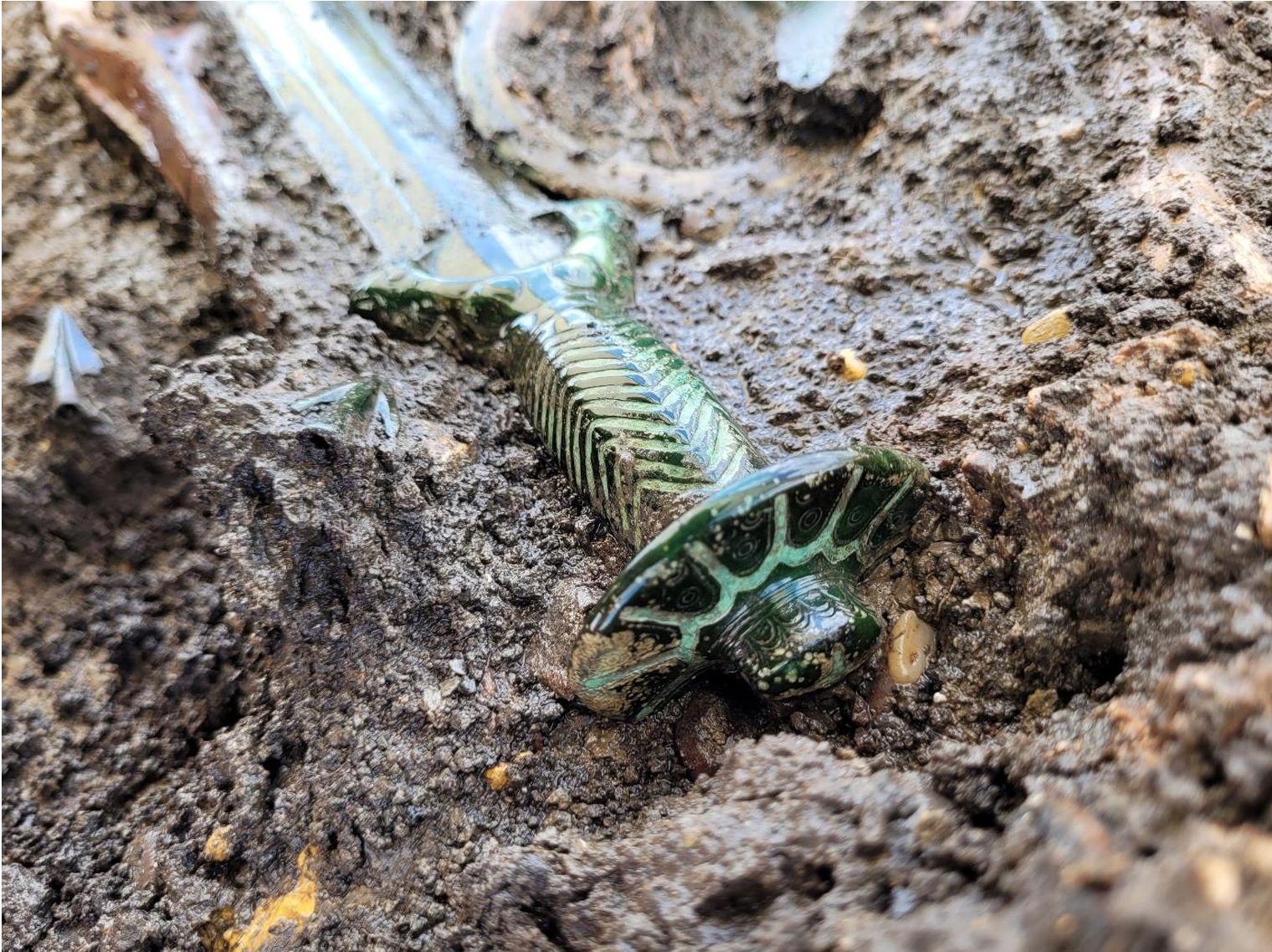Archaeologists Discover Exceptionally Well-Preserved 3,000-Year-Old Sword
A rare Bronze Age sword unearthed from a burial site in Germany is in such good condition that it still glimmers.
According to a statement the Bavarian State Office for Monument Protection released on Wednesday, the weapon was discovered in the town of Nördlingen in Bavaria, and may date to the 14th century B.C.
"Last week, archaeologists made a very special find during excavations in Nördlingen: a bronze sword that is over 3,000 years old and is so extraordinarily well preserved that it almost still shines. It is a representative of the bronze full-hilt swords, whose octagonal hilt is made entirely of bronze (octagonal sword type)," a translation of the statement reads.
An image of the 3,000 year-old octagonal sword found in Bavaria, Germany. The sword is in such good condition that it still glimmers. Bayerisches Landesamt für Denkmalpflege
Its octagonal shape make it a rare find, as only the most skilled blacksmiths were capable of making these types of swords—known as Achtkantschwert in German—that required precise casting and decoration.
"The production of octagonal swords is complex because the handle is cast over the blade (so-called overlay casting). The decoration is made with an inlay and using hallmarks. While there are two real rivets, another pair of rivets are only implied," the statement said.
These rare and specialized swords were only made in two locations in Germany at the time, one in the north, one in the south, although the exact location of this sword's origin could not be confirmed.
The sword is seen among bones at a burial site. The grave in which the sword was found contained the remains of a man, woman and child. Bayerisches Landesamt für Denkmalpflege / Archäologie-Büro Dr. Woidich
This find is especially unusual considering that most burial mounds in the area of Germany where the sword was discovered have been opened and looted in the past.
"Sword finds from this period are rare and come either from burial mounds that were deliberately opened in the 19th century or as single, presumed sacrificial finds," the statement said.
It is unclear if this octagonal sword was ever used in combat, or if it was a ceremonial blade.
However, archaeologists noted that while the blade had no signs of wear in battle, its center of gravity made it suitable for use as a real weapon, and it was capable of being used to slash opponents.
The grave in which the sword was found contained the remains of a man, a woman and a child.
"It is not yet clear whether the persons were related or what the relationship between them was," the statement explained.
Despite these questions, the sword marks an exciting find for the archaeologists and for Germany.
"The sword and the burial still have to be examined further so that our archaeologists can classify this find more precisely. But it can already be said that its condition is exceptional. A find like this is very rare," Mathias Pfeil, head of the Bavarian State Office for the Preservation of Monuments, said in the statement.
Do you have a science story to share with Newsweek? Do you have a question about ancient swords? Let us know via science@newsweek.com.
Source: Newsweek


